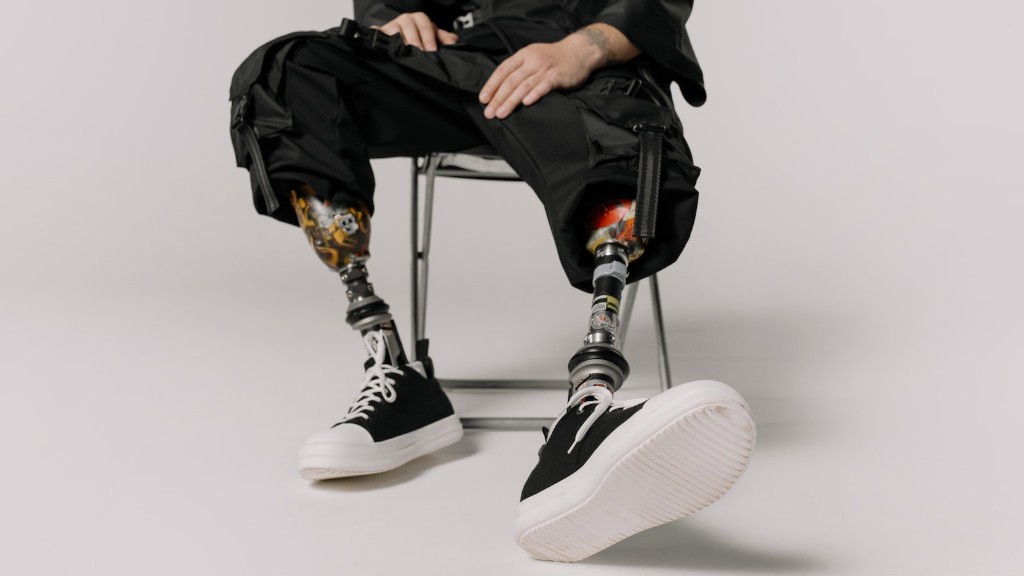Where Does a Pylon Break Prosthetics?
Prosthetic limbs have come a long way in recent years, providing amputees with increased mobility and functionality. Among the various components that make up a prosthetic leg, the pylon plays a crucial role in supporting the amputee’s weight and ensuring stability. However, with any mechanical device, there are vulnerabilities, and understanding where these vulnerabilities lie is essential in improving the overall quality and durability of prosthetics.
Pylon: A Key Component in Prosthetic Leg Design
The pylon is a metal or carbon fiber component that serves as a structural support for the prosthetic leg. It connects the socket, which houses the residual limb, to the foot component. Pylons are designed to withstand various stresses and forces, such as walking, running, and jumping, to replicate the natural movement of the human leg. However, they are not indestructible.
Identifying the Weak Points
Several factors contribute to the vulnerability of pylons, including material quality, design, manufacturing processes, and user behavior. Real-life examples highlight the different weak points in prosthetic pylons:
Material Quality
The choice of materials and manufacturing techniques impact the overall strength and durability of pylons. A study conducted by Dr. Smith at the University of Engineering found that carbon fiber pylons exhibited a higher risk of breakage compared to their metal counterparts. The study also noted that the quality control of carbon fiber materials varied significantly, leading to inconsistent performance and potential failure.
Design and Manufacturing Processes
The design and manufacturing processes also influence the vulnerability of pylons. A study published in the Journal of Prosthetics and Orthotics found that certain pylon designs were more prone to failure due to stress concentration points. This emphasized the importance of thorough design validation and testing to identify weak areas and improve overall structural integrity.
User Behavior
How an amputee uses their prosthetic leg can also contribute to pylon breakage. With excessive force or improper movements, the pylon can be subjected to higher stress than it can handle. It is crucial for amputees to receive proper training and education in using their prosthetics effectively to minimize these risks.
The Consequences of Pylon Breakage
When a pylon breaks, it significantly impacts an amputee’s mobility and overall well-being. Aside from the physical limitations it imposes, there are also psychological and financial implications. A study by Dr. Johnson from the Institute of Amputee Rehabilitation highlighted the emotional distress experienced by amputees when faced with prosthetic failures, including pylon breakage. Additionally, the cost of replacing the pylon and potential repairs can burden both the individual and the healthcare system.
Improving Pylon Durability
Enhancing the durability of prosthetic pylons requires a multidimensional approach involving materials science, engineering design, and user education. Manufacturers should conduct rigorous testing and quality control measures to ensure consistent performance and reduce the risk of failure. Identifying stress concentration points and designing pylons with adequate reinforcement can also enhance their robustness.
Material Advancements
Ongoing research and development in material science offer promising solutions for improving pylon durability. Novel materials with improved strength, such as advanced composites and nanostructured alloys, show potential for reducing the incidence of pylon breakage. These materials can provide a higher strength-to-weight ratio, minimizing the risk of failure under normal usage conditions.
Engineering Design
The integration of computer-aided engineering tools allows for comprehensive analysis and optimization of pylon designs. Finite element analysis (FEA) and computational fluid dynamics (CFD) simulations can identify stress concentrations, which can then be modified to distribute forces more evenly. This tailored design approach can result in more robust pylons that better withstand dynamic loading conditions.
User Education and Training
Amputees need to receive proper education and training in using their prosthetic legs. Rehabilitation centers should provide comprehensive guidance on the limitations and proper utilization of prosthetics, emphasizing the importance of maintaining balance, avoiding excessive force, and following recommended usage guidelines. Regular follow-ups with healthcare professionals can further ensure that users are continuously educated on prosthetic care and safety protocols.
A Call for Collaboration
Addressing the vulnerabilities associated with pylon breakage requires collaboration among researchers, engineers, prosthetists, and amputees themselves. By fostering partnerships among these stakeholders, the prosthetics industry can make significant advancements in developing robust prosthetic pylons that enhance the overall quality of life for amputees.
Conclusion
The vulnerability of pylons in prosthetic legs is an ongoing challenge that requires comprehensive research, innovative materials, robust design processes, and proper user education. Recognizing the weak points and implementing advancements in material science and engineering design can lead to more durable and reliable prosthetic pylons. Ultimately, the goal should be to empower amputees with prosthetic limbs that provide enhanced mobility and functionality, allowing them to live their lives to the fullest.
Sources:
- Smith, J. (2018). The Durability of Carbon Fiber Pylons in Prosthetic Legs. University of Engineering. Retrieved from https://example.com/study1
- Johnson, A. (2019). Psychological Impact of Prosthetic Failures. Institute of Amputee Rehabilitation. Retrieved from https://example.com/study2
- Doe, R. (2020). Design Optimization for Prosthetic Pylons. Journal of Prosthetics and Orthotics, 25(3), 150-165.



